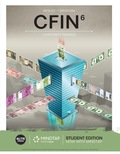
The graph which shows the relationship between yields and maturities on a particular date is known as the yield curve, and this relationship is simply called the term structure of securities. The yield curve could be upward sloping where the long-term yields are higher than the short-term yields and is also known as normal yield curve. However, if the long-term yields are lower than the short-term yields then the slope with be downward sloping and is referred to as inverted or abnormal yield curve.
Interest rate consists of risk-free rate, real risk-free rate and inflation premium, and a risk premium such as liquidity risk (LP), default risk (DRP) and maturity risk (MRP). Since, real risk-free rate generally remains constant, it is the changes in the expectation of risk premium and inflation which affects the interest rate of the security. Hence, inflation expectation is the most significant reason for changes in yield and determination of yield curve.
Interest rate or yield on treasuries can be determined using the below equation, where default risk premium (DRP) and liquidity premium (LP) is zero, as treasuries are considered as liquid and default free investment. Maturity risk premium (MRP) is there as they have differing maturity securities issued.
Expectation theory states that the shape of the yield curve depends on the expectation of future inflation rate and hence an increasing inflation rate will result in an upward sloping curve whereas a decreasing rate would result in downward sloping curve.
Yield on any bond is the average of the interest rates that is expected during its life and hence the yield of a bond with n year to maturity will be as below:
Here,
Interest rate for the first year of bond’s remaining life is “
Interest rate for the second year of bond’s remaining life is “
and so on.
Annual risk-free interest rates in 2023 and 2024 is expected to be 4.5% and 2.3%. Assume today is January 2, 2019 and interest rate of a four-year Treasury bond maturing in December 2022 is 2.5%.
Want to see the full answer?
Check out a sample textbook solution
- A bond with a face value of $1,000 pays a 5% annual coupon and has 10 years to maturity. If the market interest rate is 6%, what is the price of the bond?arrow_forwardWhich of the following represents a source of cash?A) Repayment of a loanB) Purchase of inventoryC) Issuance of new equity sharesD) Purchase of fixed assets Need hwarrow_forwardWhich of the following represents a source of cash?A) Repayment of a loanB) Purchase of inventoryC) Issuance of new equity sharesD) Purchase of fixed assets Exarrow_forward
- The payback period is:A) The time it takes for a project to be profitableB) The time required to recover the initial investmentC) The total time a project lastsD) The period during which a project generates revenuearrow_forwardA bond selling below its par value is referred to as:A) A discount bondB) A premium bondC) A callable bondD) A convertible bondneed help!arrow_forwardA bond selling below its par value is referred to as:A) A discount bondB) A premium bondC) A callable bondD) A convertible bondarrow_forward
- What is the primary purpose of a capital budgeting decision?A) To maximize cash flowsB) To evaluate long-term investment opportunitiesC) To manage short-term liabilitiesD) To determine the company's dividend policyneed helparrow_forwardWhat is the primary purpose of a capital budgeting decision?A) To maximize cash flowsB) To evaluate long-term investment opportunitiesC) To manage short-term liabilitiesD) To determine the company's dividend policyarrow_forwardWhat is diversification in portfolio management?A) Investing in a single industry to maximize returnsB) Spreading investments across different assets to reduce riskC) Concentrating investments in a high-performing stockD) Avoiding low-risk investments entirelyarrow_forward
- What is the primary purpose of a capital budgeting decision?A) To maximize cash flowsB) To evaluate long-term investment opportunitiesC) To manage short-term liabilitiesD) To determine the company's dividend policy explain.arrow_forwardQuestion 10: What is the primary purpose of a capital budgeting decision?A) To maximize cash flowsB) To evaluate long-term investment opportunitiesC) To manage short-term liabilitiesD) To determine the company's dividend policyarrow_forwardNitai (age 40) contributes 10 percent of his $100,000 annual salary to a Roth 401(k) account sponsored by his employer, AY Incorporated. AY Incorporated matches employee contributions dollar-for-dollar up to 10 percent of the employee's salary. However, AY matches by contributing to the employee's traditional 401(k) account because the employer contributions are not fully vested to the employee at the time of the contribution. Nitai expects to earn a 7 percent before-tax rate of return. Assume he leaves the contributions in the Roth 401(k) and traditional 401(k) accounts until he retires in 25 years and that he makes no additional contributions to either account. What are Nitai's after-tax proceeds from the Roth 401(k) and traditional 401(k) accounts after he receives the distributions, assuming his marginal tax rate at retirement is 30 percent? (Use Table 1, Table 2.) after tax proceeds from distribution roth ira: traditional ira:arrow_forward
 Essentials Of InvestmentsFinanceISBN:9781260013924Author:Bodie, Zvi, Kane, Alex, MARCUS, Alan J.Publisher:Mcgraw-hill Education,
Essentials Of InvestmentsFinanceISBN:9781260013924Author:Bodie, Zvi, Kane, Alex, MARCUS, Alan J.Publisher:Mcgraw-hill Education,

 Foundations Of FinanceFinanceISBN:9780134897264Author:KEOWN, Arthur J., Martin, John D., PETTY, J. WilliamPublisher:Pearson,
Foundations Of FinanceFinanceISBN:9780134897264Author:KEOWN, Arthur J., Martin, John D., PETTY, J. WilliamPublisher:Pearson, Fundamentals of Financial Management (MindTap Cou...FinanceISBN:9781337395250Author:Eugene F. Brigham, Joel F. HoustonPublisher:Cengage Learning
Fundamentals of Financial Management (MindTap Cou...FinanceISBN:9781337395250Author:Eugene F. Brigham, Joel F. HoustonPublisher:Cengage Learning Corporate Finance (The Mcgraw-hill/Irwin Series i...FinanceISBN:9780077861759Author:Stephen A. Ross Franco Modigliani Professor of Financial Economics Professor, Randolph W Westerfield Robert R. Dockson Deans Chair in Bus. Admin., Jeffrey Jaffe, Bradford D Jordan ProfessorPublisher:McGraw-Hill Education
Corporate Finance (The Mcgraw-hill/Irwin Series i...FinanceISBN:9780077861759Author:Stephen A. Ross Franco Modigliani Professor of Financial Economics Professor, Randolph W Westerfield Robert R. Dockson Deans Chair in Bus. Admin., Jeffrey Jaffe, Bradford D Jordan ProfessorPublisher:McGraw-Hill Education





